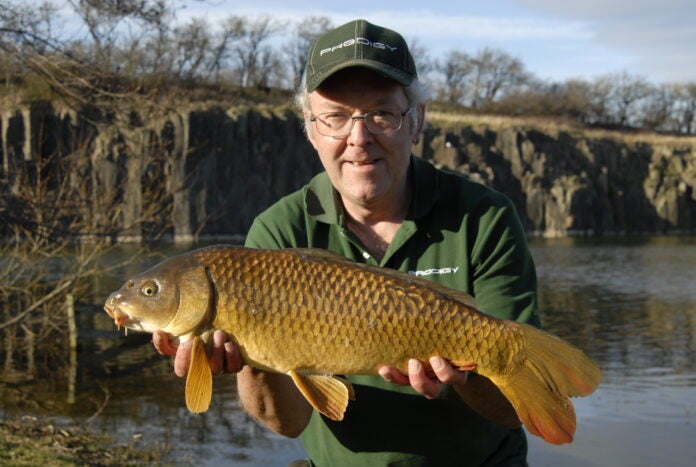BY THE WALL
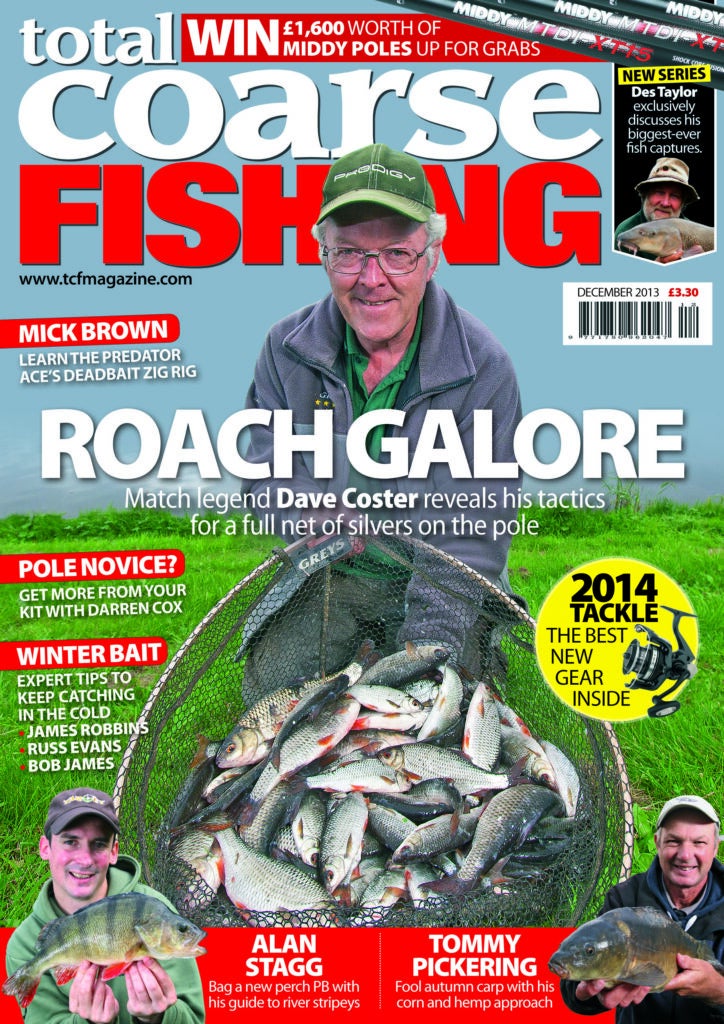

I had been working for Hardy and Greys for several years, the only problem being they are based in Northumberland and I was living in Essex. I was flying from Stanstead to Newcastle so often, the crew on easyJet didn’t have to ask me what drink and sandwich I preferred for breakfast. Occasionally, I would drive up but that was a long slog, so in the end my wife and I decided to move to Alnwick, which is thirty miles north of the River Tyne. It was quite a cultural shock for me coarse fishing wise, because it’s mostly all about salmon and trout up there. But gradually I got to unearth some interesting venues, none more so than Whittle Dene Reservoirs near Hexham, right next to Hadrian’s Wall. Angler’s Mail and Total Coarse Fishing magazines came up to do features once I had sussed the place out, because the roach sport was amazing. The four reservoirs also held skimmers, perch, crucians, trout, dace, gudgeon and some stray carp.
MATCH SCENE
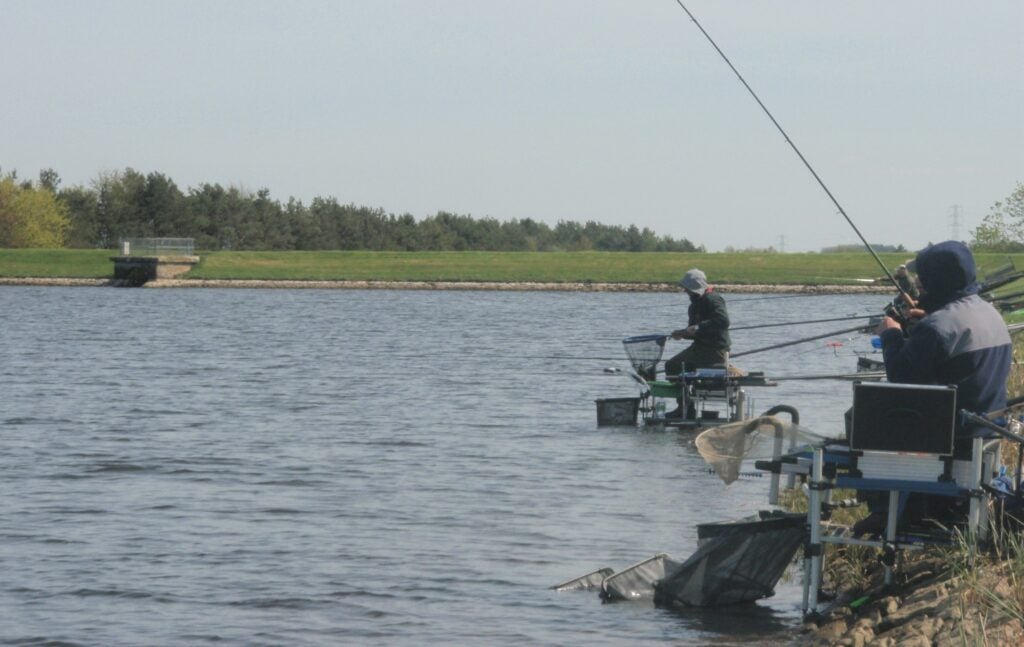

Despite coarse fishing being somewhat limited in the North East, I discovered a thriving match circuit. Apart from the Hexham reservoirs, the River Tees near Darlington always had well attended competitions, along with the River Tyne, where matches were more limited, due to it being a prime salmon venue. It was bream, roach and perch on the Tees, while dace dominated on the Tyne. The reservoirs were normally ruled by skimmer weights using groundbait feeder tactics, although I did win a couple of events with good hauls of roach. It wasn’t easy on these exposed, clear and often windswept expanses of water, but always enjoyable. When there were lots of anglers, the fish tended to move much further out. Whittle Dene was also a moody place, heavily affected by the weather, which could be brutal at times. The standard of angling was very good, and you needed to be well tuned in to have a chance of winning anything.
BETTER DAYS
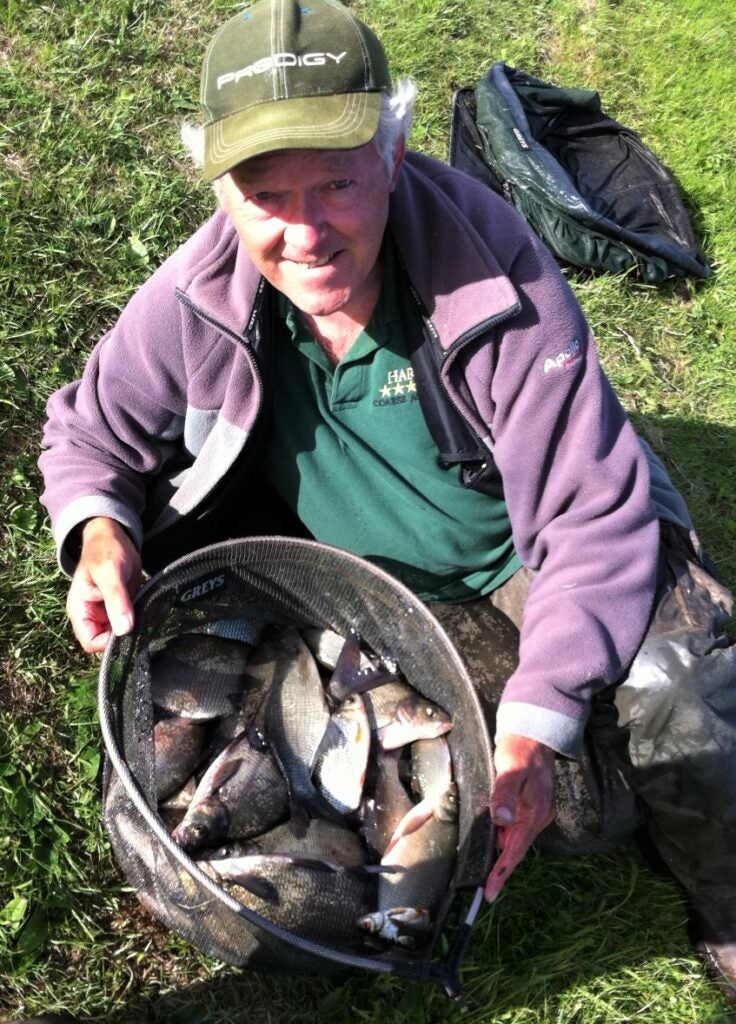

Pleasure fishing the Hexham reservoirs was easier, and very often it was possible to bag up on the pole, providing there were not too many other anglers around. The Great Northern and Match Lakes were deep and I worked out some interesting methods. In some areas you could catch the skimmers closer in, but it took a while to find these hotspots. I caught the nice haul in the accompanying photograph in a shallower corner, one of the few spots that threw up odd crucians, which had been stocked the year before I started fishing the venue. Another ace swim was where a small inflow pipe topped up levels. The bottom was clean gravel in that area at 10 metres, which attracted big skimmers and proper bream much closer in. A great trick I perfected to find the larger roach, was to fish at full depth to begin with, catching whatever turned up, then to switch shallow after loose feeding regularly. That’s when the big red fins moved in.
SPECIAL FISH
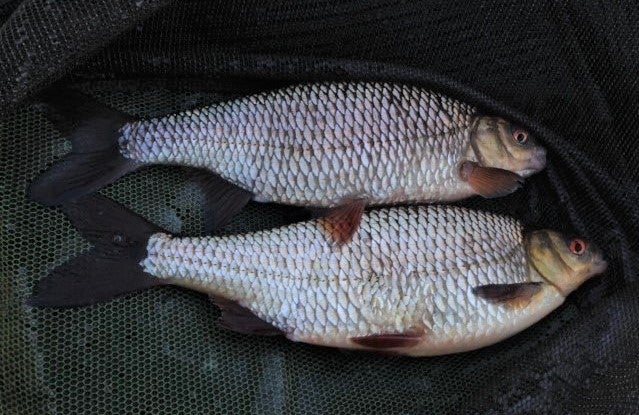

The interesting thing about the Hexham reservoirs is they are fed with water pumped in from the River Tyne, hence dace being resident. I caught a few corkers, including a 12oz one in a match. There were lots of gudgeon, which could be a bit of a pain at times. They were mostly very small and impossible to build a weight with, unless you managed to mix in plenty of slightly bigger roach and perch. There was a good head of decent roach, the best one I weighed in a match went 1lb 12oz, caught on the pole during a blizzard! The pair of big roach in the photo fell to segments of worm on the pole as it got dark on a cold, wintry day. There were some massive ferox trout in all the reservoirs and I managed to get attached to quite a few, but never landed any of the real monsters, which were well into double figures. Apart from roach, dace, perch, skimmers, trout and gudgeon, I only ever saw one eel and lost a stray carp I hooked.
HEADING SOUTH
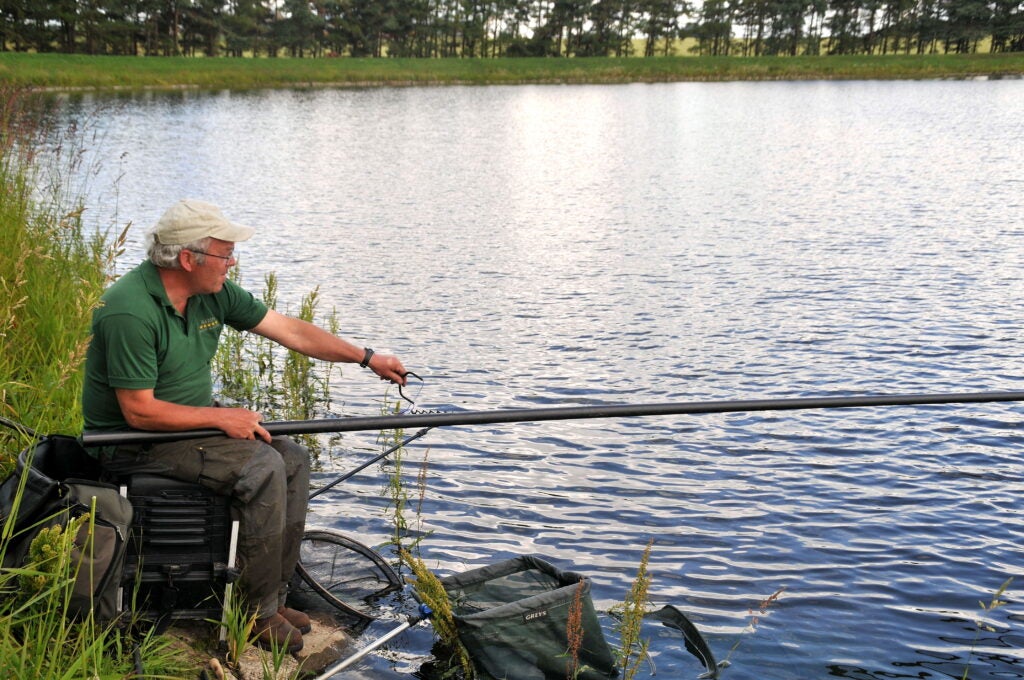

The Great Southern Reservoir at Whittle Dene was a long hike with a trolley, but worth the effort. This large bowl-shaped water was a bit like fishing wild Irish loughs with its rocky shoreline, which became exposed when levels were low. I loved the place because you rarely saw other anglers brave enough to haul their gear this far, bearing in mind it was even harder going back because there was a steep slope to drag everything back up. Although the place was ravaged by resident cormorants, the size of the roach and perch tended to be much bigger than the other, deeper reservoirs. I quickly found that these fish liked hugging the nearside rocky terrain, because it was the only cover in this otherwise exposed span of water. It was normally gin-clear which, along with bright sunshine and little wind, was often the kiss of death, at least until the light began to fade. It was here where I discovered fluorocarbon could make a huge difference.
ON THE POLE
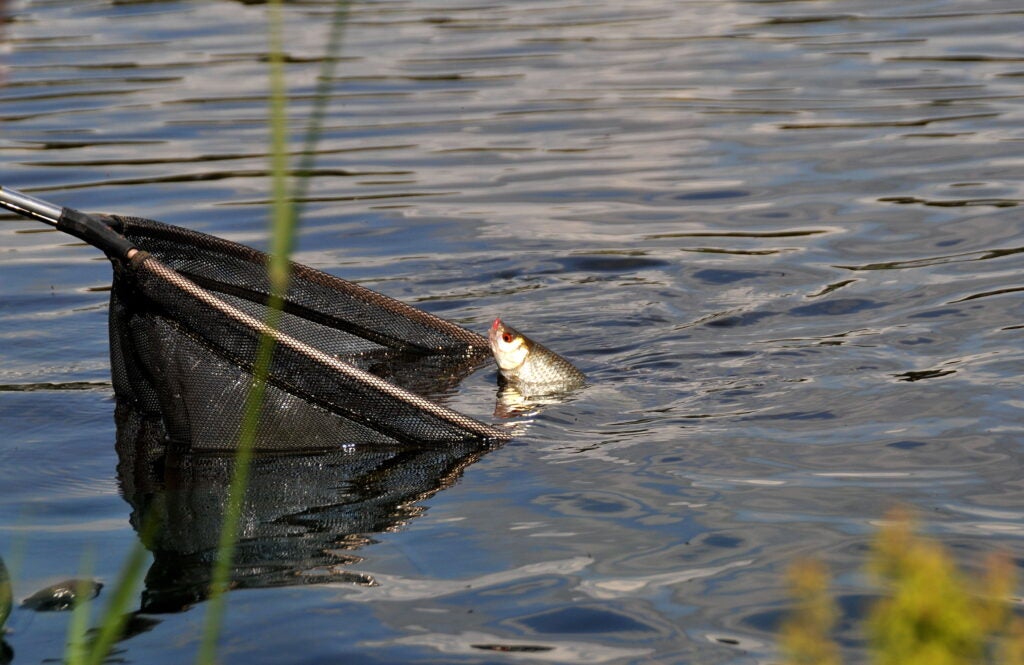

I enjoyed my best catches on the long pole, again finding full-depth rigs were best to begin with, but later switching to fishing shallow for better quality fish and often quite hectic sport. There were tough days and just as many brilliant sessions. Unlike the other reservoirs, this one hadn’t been stocked with skimmers, although I did witness one being caught, which must have got in through the inflowing stream. There were a few big wild-looking carp that sometimes cruised through, but they were incredibly skittish. The strangest thing that happened was during one session when I caught a chub, followed by another next put in. I had never seen this species before and never caught one again. It was mainly roach that provided all the action, feeding dark groundbait with some chopped worm to begin with, then loose feeding hemp or casters over the top. Red maggots normally caught fish straight away, later switching to casters, hemp or tares.
LEARNING MORE
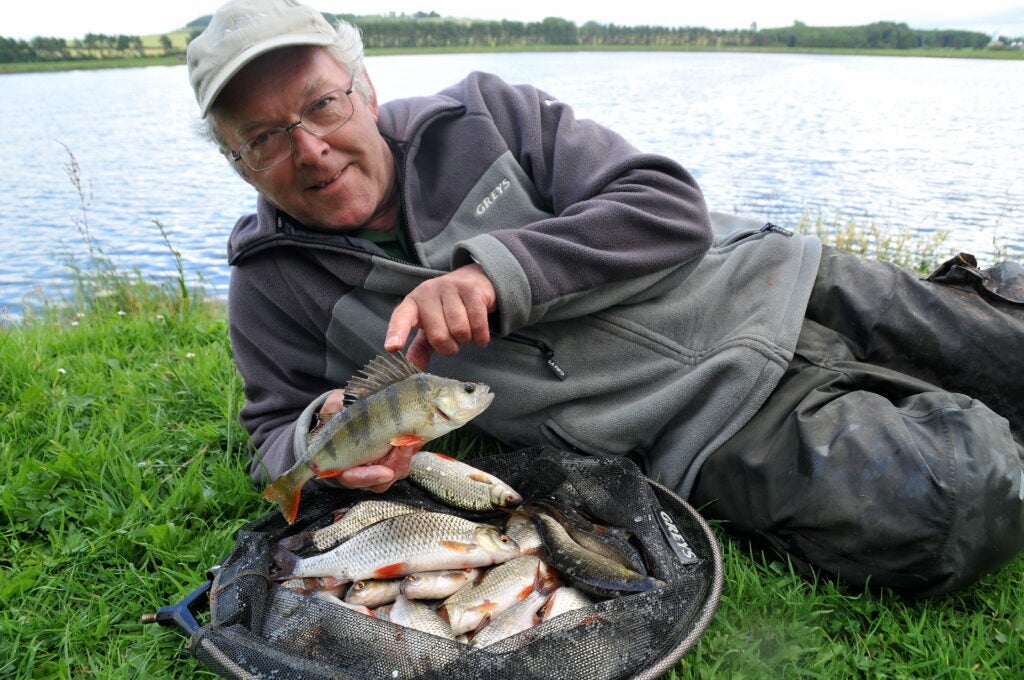

The waggler worked better when levels were low during summer and early autumn. When the reservoir was topped up, feeder tactics came more into the picture, with dark groundbait laced with hemp and casters, combined with red maggot hook baits working well. I also developed another interesting method towards the end of my northern adventure, fishing a small free-running bomb with a light-actioned short quivertip rod. I would simply loose feed a bed of hemp and then catapult casters over the top, working my rig around searching for bites. A short fluorocarbon hook length made a huge difference here, pulling loads of bites, while baits presented on normal low diameter mono were ignored. A single caster was better than maggots because it didn’t bury in the sandy bottom. I was suddenly catching much bigger roach and perch than you see here. This photo was taken way back during my early days on the venue.
STRANGE NAME


I was working in the offices at Hardy and Greys when a member of staff came through from the shop and museum at the front of the building, asking if I could help a customer. It turned out he ran a big estate just down the road that had an old lake, set in a heavily wooded and sheltered valley. Apparently, a club used to lease the water many years ago, but the wooden stages had fallen into disrepair and nobody had fished the place for ages. Would I give it a go? Of course I would! The lake turned out to be around an acre and a half, set in the most beautiful woodlands. It was a bit tricky to fish to begin with, because all the stands were falling to pieces and the banks were heavily overgrown. But I quickly discovered the water was full of fish, including roach, rudd, perch, gudgeon, hybrids, skimmers, tench and carp. I had the place to myself for over a year, while new stands were put in and a better track laid. Oddly, it was called Blubbery Lake.
HIDDEN TREASURES
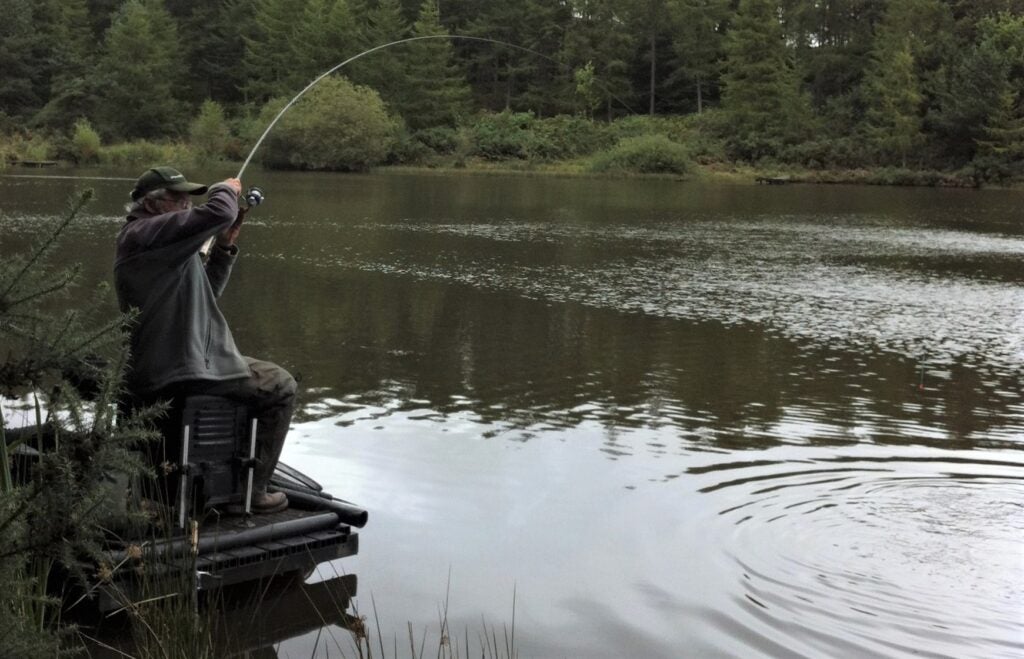

As I got to know the weirdly titled lake, deep in the Northumbrian woods, some nice surprises turned up. It held some big perch, a few bonus tench, roach to over a pound and loads of skimmers up to around 2lbs. I got smashed up a few times but then managed to land a couple of the culprits which were fighting fit double figure carp. I also caught a decent crucian and a big fan-tailed brown goldfish. Another guest angler landed an amazing double figure trout, which gave a bit of an insight into the history of the place. Apparently, it had been a trout lake originally but too many were being poached, so it was stocked with coarse fish. A club leased it for a while, but that fizzled out and it became neglected. This was mainly to do with the long access track, which had become badly potholed and very muddy. All that was being put right by this stage. This photo was me playing the monster of the lake, a carp I couldn’t fit into my landing net!
THE QUARRY
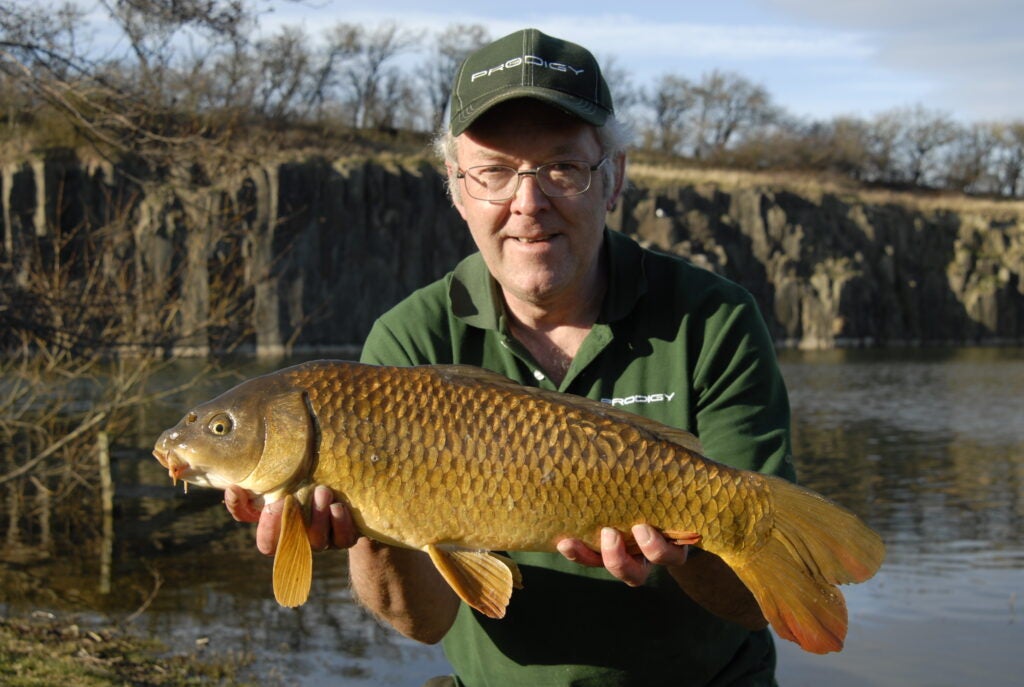

Another interesting small lake I used to frequent was Little Mill just outside Alnwick, run by the Oddfellows Angling Club. This old stone quarry was on another estate, with a stunning backdrop that had been cut into a hillside, along with rolling grassy fields on the access side. It was beautiful, with sheep grazing into the distance, like a scene out of a fairy tale book. It was used for the Vera TV detective series, where a couple of the characters sat on the boulders by the car park overlooking the water, and talked about it not holding fish anymore. The scriptwriters had got that part wrong, because it was packed with carp and roach. I used the setting a lot for Hardy and Greys catalogue photos because, apart from the great scenery, the fish were fantastic-looking too. One February day it was unusually mild for the North East. My boss told me to get out of the office for a photo shoot, not expecting much to be caught. I nearly broke the ton mark!
HIGHER UP
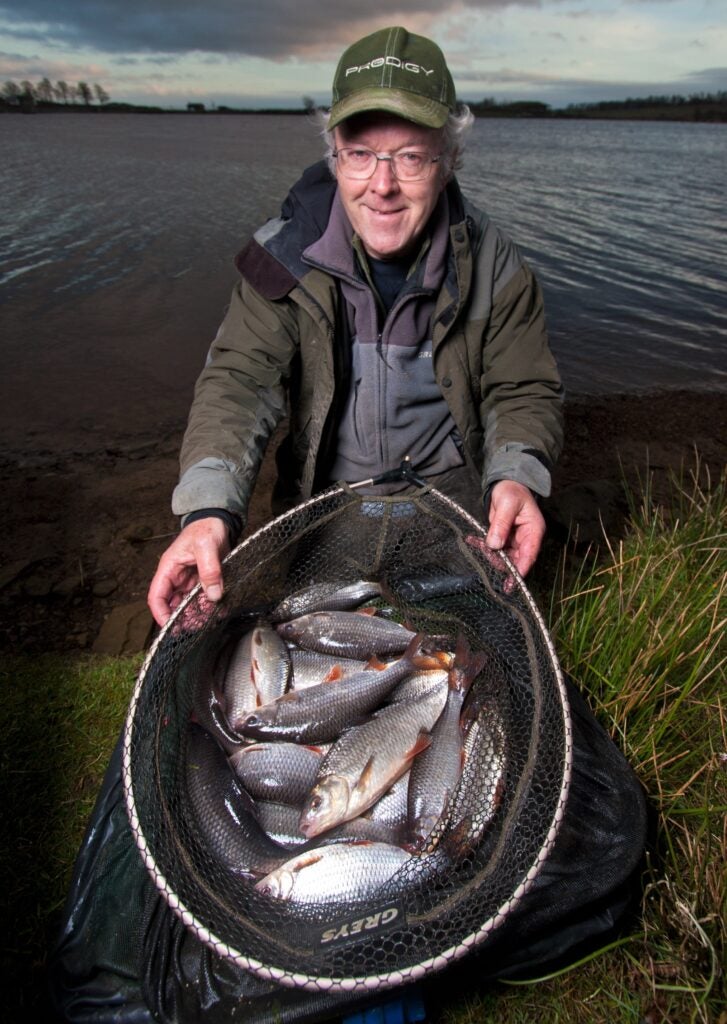

As a thank you for promoting the great fishing in the North East area through my various magazine features, Northumbrian Water Authority gave me a fantastic present. Each year, when they closed down Fontburn Reservoir for trout fishing, they let me loose on the venue for a whole month. I wasn’t after the trout, but the big shoals of roach the water held. It was fabulous having the place to myself, which was a big, flooded valley, high up in the hills above Rothbury. The roach fishing was superb, with lots of quality fish to well over the pound mark. Plenty of different methods worked, but one of the best was the waggler, looking for around eight feet of depth where the banks gently sloped down into deeper areas. The silver fish seemed to feel safer patrolling the margins. There were cormorants, ferox trout, otters, mink and rumours of huge pike, although I never saw any of the latter. What I did experience was top class roach fishing.
WILD RESERVOIRS
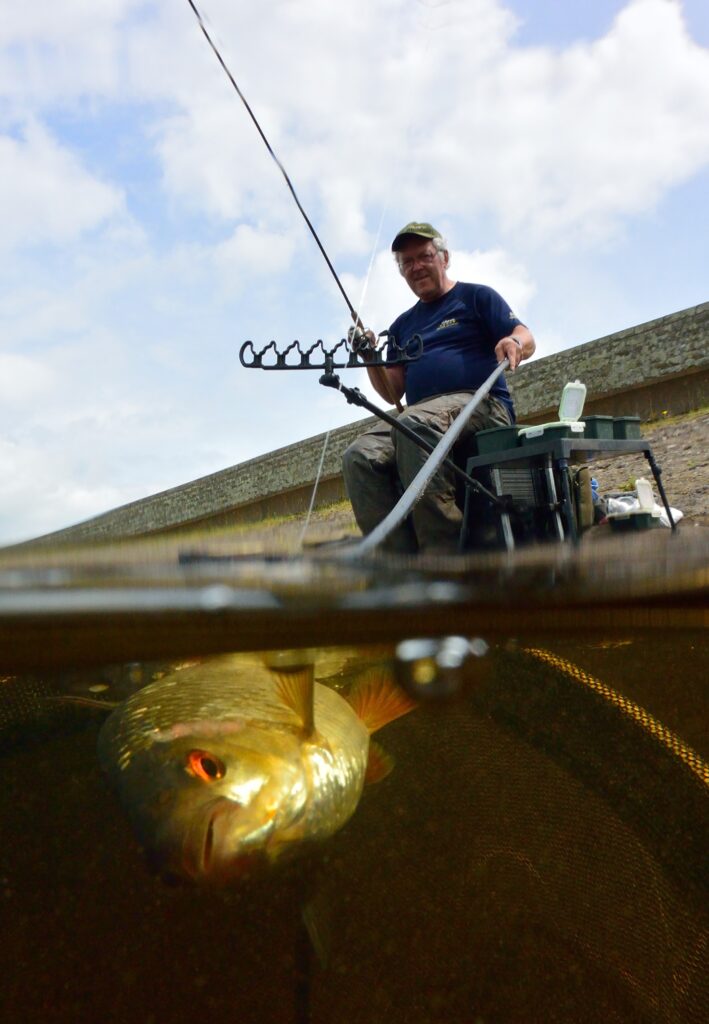

Yet another reservoir crammed with roach was Derwent Reservoir in Co Durham. Although it was mainly another trout venue, Northumberland Water let coarse anglers on certain sections, also allowing a few matches. I did a feature there for Angler’s Mail and ace photographer Ian Chapman (Chappy) took this brilliant photograph of me netting a roach on the dam wall. It was an often daunting place to fish. I remember one match when the wind picked up and blew my keepnet completely out of the water. I had rollers three feet high crashing onto the rocky shoreline around me and it became impossible to present tackle properly. On other occasions when the weather was more clement, it was a beautiful setting to enjoy a day on the bank, plus once the roach arrived it would often lead to an action-packed time. I loved my stay up north and miss some of my favourite venues there, but now I’m in the Midlands, I have found so many more.










